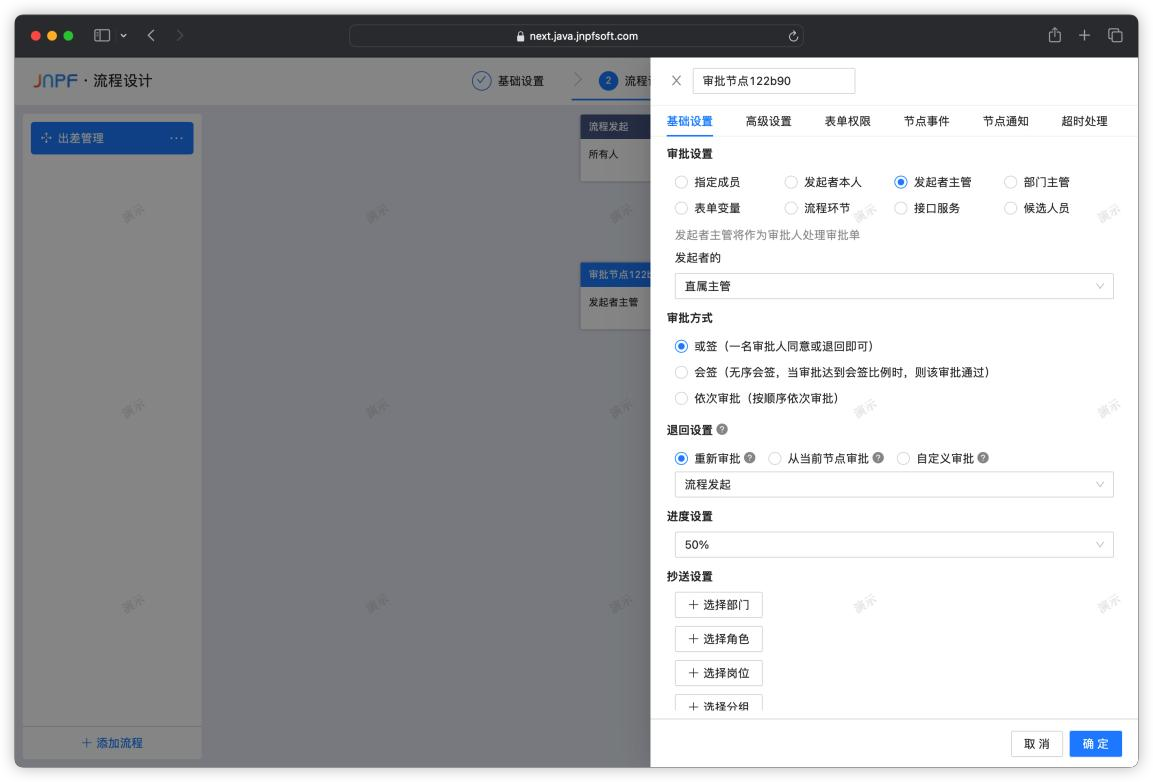Table of contents
What should a good low-code development platform look like?
Full visual design, drag and drop layout, easy interface design
Full life cycle management, forming a closed loop of "demand input-delivery-demand input"
JNPF empowers developers, it’s no lie
What should a good low-code development platform look like?
In terms of enterprise-level application construction, it is to complete a software program whose application complexity gradually increases with technological advancement, demand refinement, and business changes. Users want a better experience, and the complexity is increasing exponentially.
Based on this, the key value of the low-code development platform ischanging the way applications are built, such as enabling business personnel and developers to quickly build The prototype enables unhindered communication, meets business needs in a short time, and adapts to rapid business iteration and innovation a> is also an important reference for evaluating low-code development platforms. cross-end application construction, provide development capabilities for business personnel, and effectively improve application construction productivity . In addition, whether it can achievevisual design; Reduce the complexity of application construction through low-code
Therefore, a good low-code development platform must have core capabilities covering full-process visual design, full life cycle management, and mobile development.

As far as I know, only JNPF in China has achieved this balance best.Citizen developers, a universal platform that meets all scenarios, its development power is also constantly increasing, the platform is still very interesting, you can try to experience it.
1. Full visual design, drag and drop layout, easy interface design
JNPF provides a visual interface editor. Provide services to more application participants besides traditional developers through business-oriented interface design capabilities. Low-code visual design not only implements drag-and-drop design, but more importantly empowers users, allowing more citizen developers with different knowledge backgrounds to complete components of application construction (including but not limited to user interface, business process, approval process, business logic), let more roles participate in the application building process.
At the same time,JNPF supports model association updates. Low code essentially uses various model capabilities to reduce difficulty and improve efficiency for development users. A complete low-code development platform should serve both professional developers and business executives. It must support forward modeling such as automatically generating or changing page models for data models, and also support reverse modeling of more business-oriented models such as page models and process models. Reverse modeling that generates or changes data models.

2. Full life cycle management, forming a closed loop of “demand input-delivery-demand input”
JNPF-based application construction starts with requirement input, and goes through analysis, design, development, testing, and release to the development process of public cloud/private deployment, from post-release operation and maintenance, to problem feedback and new requirements to form demand input again, forming a closed-loop full life cycle management.
In this closed loop, it will involveproduct managers, demand analysts, architects, developers, testers, operation and maintenance personnel, operations personnel, technical support personnel, etc.< /span> and other various roles work independently and collaboratively. The low-code development platform must have full life cycle characteristics to truly control the entire application development process to achieve rapid delivery and reduce development costs. cost target.
The ability to write code in low-code development platforms is still irreplaceable. JNPF provides the ability to quickly intervene and insert code at all levels and stages of the application, such as adding custom components, customizing personalized logic processing, and embedding third-party applications in the information circulation process.
JNPF packages and refines basic capabilities such as data processing, model architecture, and business support services into a low-code development scaffolding. Professional developers write code based on the scaffolding, improve programming efficiency, and Integrate iteration, release, and operation processes; at the same time, it also provides scripts that encapsulate data processing, data query, process control, API calling, etc. The editor provides fast and flexible personalized execution logic design capabilities for enterprise informatization implementers and business field experts who are between business users and professional developers.

3. Technology stack
- 前端:Vue3、Typescript、Vite、Less、Ant design vue3.x、Echarts…
- 后端:Springcloud、Springboot、Mybatis、Maven…
- Multiple data sources, MySQL, Oracle, SQL Server, PostgreSQL, Dameng, Renmin University of Finance, etc., to meet your storage needs for different data. Whether it is a relational database or a non-relational database, JNPF can easily handle it and make your project more scalable.

JNPF empowers developers, it’s no lie
Using JNPF, developers can build an application several times faster than traditional methods. This is no lie, it is a fact that happens every day.
JNPF isa low-code development platform for enterprise organizations and individual developers, supporting visualization, low-code/no-code development, and integration Agile mobile development technology enables fast and simple application construction.
JNPF can supportfull-role development. Whether IT personnel or business personnel, they can easily build applications. At the same time, JNPF integrates ToB and ToC development scenarios, thus achieving full-scenario development.
JNPFVisual drag and drop + code generator + multi-terminal compilation technology, integrated with development platform Seamless integration of third parties and Devops platforms form a complete development and construction service that enables development, integration, testing, deployment, operation, and operation and maintenance.

For companies or developers with application development needs, if they are interested in learning how to improve development efficiency based on low code, you can use this tool to check whether it meets your needs.
Land site:https://www.jnpfsoft.com/?csdnxx
Go to the JNPF official website to learn more quickly. It is recommended that you register an account and try to use the JNPF online editor for development. I believe you will further feel the power of the platform~